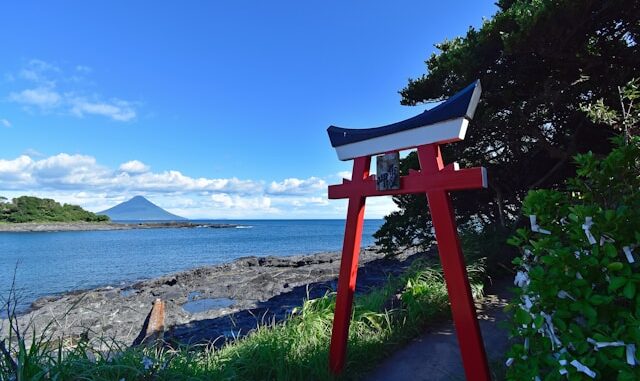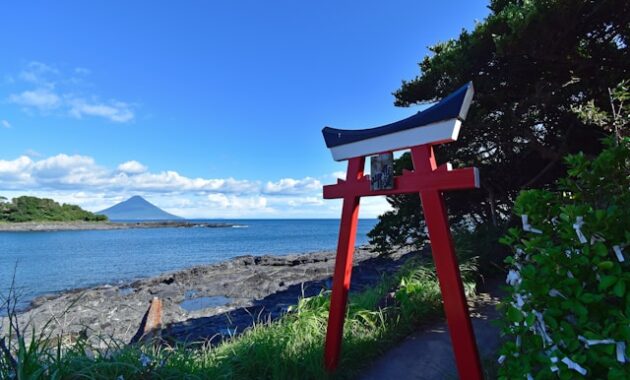
Introduction to Ibusuki – A Hidden Gem in Southern Japan
Nestled at the southern tip of Kagoshima Prefecture, the serene city of Ibusuki offers a blend of natural wonders, therapeutic experiences, and coastal beauty that remains largely untouched by mass tourism. With its unique geothermal sand baths, dramatic volcanic landscapes, and panoramic views of Kinko Bay, Ibusuki delivers an unforgettable journey into Japan’s southern charm. Whether you’re a nature lover, wellness seeker, or cultural explorer, Ibusuki promises immersive moments unlike any other.
Natural Sand Baths: A Signature Ibusuki Experience
Among the many treasures of Ibusuki, the most iconic and globally renowned are its natural sand baths—a geothermal marvel that attracts wellness enthusiasts from around the world. Along the coast of Saraku Sand Bath Hall, steam rises naturally from underground hot springs, heating the black volcanic sand to optimal temperatures.
Visitors don a light cotton yukata before being gently buried by trained staff in the warm sand. The experience, lasting around 10 to 15 minutes, is believed to stimulate circulation, relieve muscle tension, and detoxify the body through induced perspiration. More than just relaxation, the sand bath offers a rare cultural and therapeutic experience rooted in centuries-old Japanese traditions.
Where to Experience Sand Baths in Ibusuki
- Saraku Sand Bath Hall: The most famous sand bath facility in Ibusuki, located directly by the seashore.
- Ibusuki Hakusuikan: A luxurious onsen resort with private sand bath options.
- Healthy Land Tamatebako Onsen: Offers open-air baths with an ocean view and access to geothermal sand therapy.
Chirin-ga-hama Beach – The Singing Sands
A short trip from downtown Ibusuki leads to Chirin-ga-hama Beach, famed for its “singing sands” that emit musical squeaks underfoot when conditions are just right. This rare natural acoustic phenomenon occurs due to the unique composition of the sand grains and the dryness of the air.
Beyond its musical appeal, the beach is known for its vibrant sunsets, where the orange hues of the sky blend perfectly with the turquoise waters. It’s a favorite for photographers and couples seeking a romantic coastal stroll. During summer, locals and tourists alike gather for festivals, swimming, and picnics by the shoreline.
Mount Kaimon – The Fuji of Satsuma

Looming in the distance, Mount Kaimon—often called the “Fuji of the South”—is an elegant, cone-shaped volcano that forms a striking silhouette against the Ibusuki skyline. Standing at 924 meters, it offers a moderately challenging hiking route for adventurers seeking sweeping views of the Satsuma Peninsula, Kagoshima Bay, and beyond.
Highlights of the Mount Kaimon Hike:
- Trail Length: Approx. 5 km round trip.
- Estimated Time: 4–5 hours.
- Features: Dense cedar forests, panoramic observation points, and unique volcanic rock formations.
For those not inclined to hike, the Kaimon Sanroku Nature Park at the mountain’s base offers scenic picnic spots, camping areas, and serene walking paths that still capture the grandeur of the landscape.
Lake Ikeda – A Crater Lake Wrapped in Myth and Mystery
Just west of Mount Kaimon lies Lake Ikeda, the largest crater lake in Kyushu, renowned for its deep blue waters and supernatural legends. According to local folklore, the lake is home to Issie, a mythical creature likened to the Loch Ness Monster. While sightings remain unverified, the allure of mystery draws many curious visitors.
Surrounding the lake are lush gardens, flower parks, and bike trails, making it a delightful stop for nature walks and leisurely sightseeing. The lake is also a hub for kayaking and paddle boating, allowing visitors to immerse themselves in the tranquil setting.
Cultural Attractions and Local Heritage
Ibusuki isn’t just about natural beauty—it also showcases a rich cultural fabric woven through centuries.
Satsuma Denshokan Museum
Located within the Hakusuikan resort, this museum offers a deep dive into the Satsuma domain’s history, with exhibitions featuring samurai armor, traditional crafts, and regional ceramics. The architecture of the museum itself reflects Edo-period elegance, making it a worthwhile destination for history buffs.
Iwasaki Art Museum
Dedicated to the works of local artist Iwasaki Yoshio, this gallery houses an impressive collection of modern and traditional Japanese art. The surrounding Zen garden enhances the reflective atmosphere.
Ibusuki Cuisine – A Taste of the Sea and Soil
No visit to Ibusuki is complete without savoring its local gastronomy, influenced by its coastal location and fertile volcanic soil. The city’s cuisine is a harmonious fusion of fresh seafood, seasonal vegetables, and regional delicacies.
Must-Try Dishes in Ibusuki:
- Katsuo (Bonito): Served both raw and seared, often caught fresh from nearby waters.
- Satsuma-age: Deep-fried fish cake made from minced fish and vegetables.
- Hot Sand Onsen Eggs: Slow-cooked using geothermal steam, delivering an incredibly creamy texture.
- Ibusuki Black Pork: Known for its tenderness and rich flavor, often enjoyed in hot pot dishes or grilled.
Getting to Ibusuki and Getting Around
Access from Kagoshima:
- By Train: The JR Ibusuki-Makurazaki Line connects Ibusuki to Kagoshima-Chuo Station in approximately 60–80 minutes.
- By Car: A scenic coastal drive from Kagoshima City takes around 90 minutes via National Route 226.
Once in the city, travelers can utilize:
- Rental Bicycles: Perfect for exploring lakesides and beaches.
- Local Buses: Connect major attractions and hot spring facilities.
- Onsen Shuttle Services: Many hotels offer complimentary pick-ups for guests.
Best Time to Visit Ibusuki
Ibusuki enjoys a mild subtropical climate, making it a year-round destination. However, the ideal seasons are:
- Spring (March–May): Cherry blossoms near Lake Ikeda and lush greenery around Mount Kaimon.
- Autumn (October–November): Clear skies, pleasant temperatures, and vibrant fall foliage.
The Ibusuki Nanohana Flower Festival in January is a winter highlight, showcasing fields of blooming rapeseed flowers, an early herald of spring.
Where to Stay in Ibusuki
Accommodations range from traditional ryokans to modern seaside resorts, offering authentic hospitality and access to geothermal spas.
- Ibusuki Hakusuikan: A luxury resort combining onsen relaxation with gourmet dining and cultural exhibits.
- Ibusuki Phoenix Hotel: Oceanfront rooms and family-friendly facilities.
- Oyado Yufuin no Sato: A quaint ryokan with private open-air baths.
Conclusion – Why Ibusuki Should Be Your Next Destination
From the therapeutic embrace of its geothermal sand baths to the dramatic landscapes sculpted by volcanic forces, Ibusuki is a destination that transcends the ordinary. It’s a place where ancient traditions meet natural beauty, where every corner tells a story, and where wellness, adventure, and culture come together in perfect harmony.
Whether you’re soaking beneath volcanic sands, hiking the slopes of Mount Kaimon, or savoring a steaming bowl of local delicacies, Ibusuki invites you to rediscover Japan’s hidden charms in the most unforgettable way.